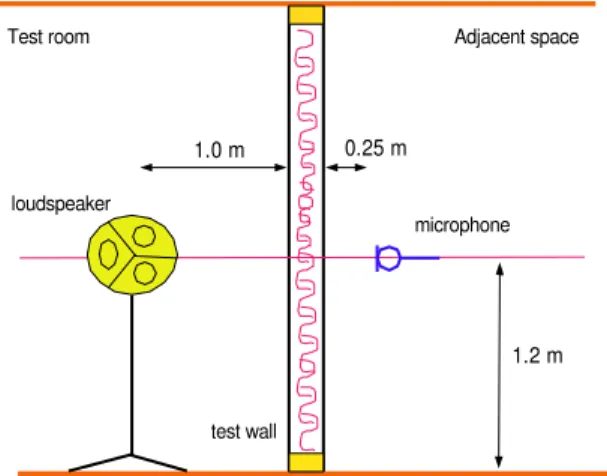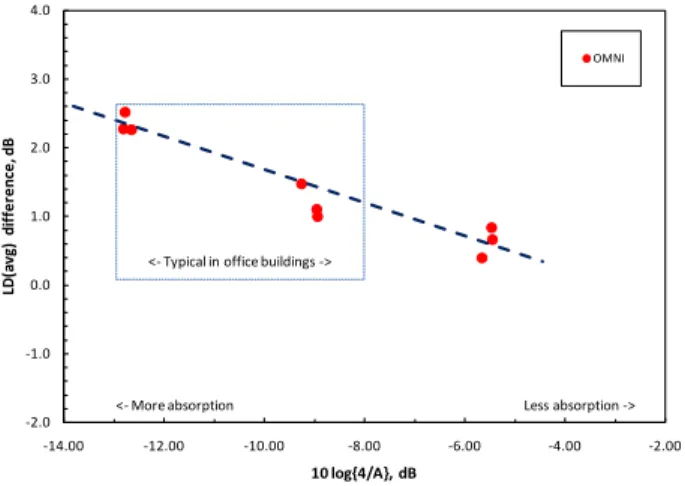Publisher’s version / Version de l'éditeur:
Vous avez des questions? Nous pouvons vous aider. Pour communiquer directement avec un auteur, consultez la première page de la revue dans laquelle son article a été publié afin de trouver ses coordonnées. Si vous n’arrivez pas à les repérer, communiquez avec nous à PublicationsArchive-ArchivesPublications@nrc-cnrc.gc.ca.
Questions? Contact the NRC Publications Archive team at
PublicationsArchive-ArchivesPublications@nrc-cnrc.gc.ca. If you wish to email the authors directly, please see the first page of the publication for their contact information.
https://publications-cnrc.canada.ca/fra/droits
L’accès à ce site Web et l’utilisation de son contenu sont assujettis aux conditions présentées dans le site LISEZ CES CONDITIONS ATTENTIVEMENT AVANT D’UTILISER CE SITE WEB.
Acoustics Week in Canada 2011 (Annual Conference of the Canadian Acoustical
Association): 12 October 2011, Quebec City, QC [Proceedings], pp. 1-2,
2011-10-12
READ THESE TERMS AND CONDITIONS CAREFULLY BEFORE USING THIS WEBSITE. https://nrc-publications.canada.ca/eng/copyright
NRC Publications Archive Record / Notice des Archives des publications du CNRC :
https://nrc-publications.canada.ca/eng/view/object/?id=6dd808e5-172e-4ba8-a595-5bbc21417378
https://publications-cnrc.canada.ca/fra/voir/objet/?id=6dd808e5-172e-4ba8-a595-5bbc21417378
NRC Publications Archive
Archives des publications du CNRC
This publication could be one of several versions: author’s original, accepted manuscript or the publisher’s version. / La version de cette publication peut être l’une des suivantes : la version prépublication de l’auteur, la version acceptée du manuscrit ou la version de l’éditeur.
Access and use of this website and the material on it are subject to the Terms and Conditions set forth at
Evaluation of a new speech privacy quick test for enclosed rooms
Evaluation of a new speech
privacy quick test for enclosed
rooms
Bradley, J.S.; Gover, B.N.
NRCC-54532
A version of this document is published in / Une version de ce document se trouve dans:
Acoustics Week in Canada 2011, Annual Conference of the Canadian Acoustical Association,
Quebec City, QC, October 12-14, 2011
The material in this document is covered by the provisions of the Copyright Act, by Canadian laws, policies, regulations and international agreements. Such provisions serve to identify the information source and, in specific instances, to prohibit reproduction of materials without written permission. For more information visit http://laws.justice.gc.ca/en/showtdm/cs/C-42
Les renseignements dans ce document sont protégés par la Loi sur le droit d’auteur, par les lois, les politiques et les règlements du Canada et des accords internationaux. Ces dispositions permettent d’identifier la source de l’information et, dans certains cas, d’interdire la copie de documents sans permission écrite. Pour obtenir de plus amples renseignements : http://lois.justice.gc.ca/fr/showtdm/cs/C-42
Evaluation of a New Speech Privacy
Quick Test for Enclosed Rooms
John S. Bradley and Bradford N. Gover National Research Council Institute for Research in
Construction, Ottawa, ON K1A 0R6, Canada John.Bradley@nrc-cnrc.gc.ca
1.
2.
INTRODUCTION
The speech privacy provided by an enclosed room can be assessed in terms of the Speech Privacy Class (SPC) as described in ASTM E2638 [1]. SPC is the sum of the measured ambient noise level, (Ln) at the position of a
potential eavesdropper and the measured level difference (LD) from a room average level in an adjacent room.
SPC = LD(avg) + Ln(avg) (1)
LD(avg) and Ln(avg) are arithmetic averages of decibel
values over the 1/3-octave bands from 160 to 5000 Hz. The E2638 procedure can identify weak points in the room sound insulation and can give an accurate rating of the overall speech privacy provided by the room. In some cases a simpler and quicker test, that could evaluate particular problems, would be more helpful. This paper reports on the development of a speech privacy Quick Test (QT) intended to provide a more focused and efficient evaluation of the speech privacy provided by parts of enclosed rooms. Whereas the E2638 method requires multiple source and receiver positions in the source room, the QT uses a single loudspeaker position 1 m from the room boundary in the source room. As illustrated in Fig. 1, the receiver is located 0.25 m from the room boundary outside the room and opposite the sound source. This test configuration resulted from extensive tests to develop a procedure that would provide results in close agreement with the E2638 procedure [2].
3.
MEASUREMENTS
The attenuations of 3 test walls were measured in terms of level differences (LD(f)) using the QT procedure. These were compared with LD(f) values from the full E2638 test [1] and also with standard transmission loss (TL(f)) test results. The comparisons were repeated for the 9 combinations of 3 test walls (STC 49, 46 and 32) and 3 room absorption conditions, intended to represent a wide range of constructions and room acoustics conditions. Results were repeated using both an omni-directional source (dodecahedron) and a directional source (23 cm diameter driver in non-vented enclosure). Several approaches to measuring the source levels for the QT were considered and direct measurement at a distance of 1 m in each source room was most successful [2].
4.
HIGHLIGHTS OF RESULTS
Fig. 2 shows an example of comparisons of LD(f) and TL(f ) values for one of the 9 test conditions. The wall was
Fig. 1. Source and receiver positions for Quick Test.
a steel stud and gypsum board construction with a measured rating of STC 49. The absorption condition corresponded to mid-frequency reverberation times of about 0.8 s in the test room and about 0.6 s in the receiving space. For this absorption condition, the E2638 test results for both the omni-directional source (OMNI) and the directional source (DIREC) gave very similar LD(f) values and these LD(f) values were quite similar to the TL(f) values up to the coincidence dip frequency (2500 Hz). For less absorptive room conditions, the TL(f) values were higher in value than the LD(f) values from the E2638 test results up to 2500 Hz.
Fig. 2. Comparison of QT and E2638 test LD(f) values with TL(f) values for STC 49 rated Wall01.
The LD(f) values from the QT procedure diverged from the other results with the differences increasing with increasing frequency. When using the OMNI source, the QT results varied in a manner approximately parallel to the E2638 results. However when the DIREC source was used, the QT results gave much larger LD(f) values at higher frequencies than the other tests. These source-type related differences were also present for the other room absorption conditions.
1.2 m 1.0 m 0.25 m
test wall
microphone loudspeaker
Test room Adjacent space
125 250 500 1000 2000 4000 10 20 30 40 50 60 70 T L (f ) or LD (f ), dB Frequency, Hz TL E2638-OMNI E2638-DIREC QT-OMNI QT-DIREC Wall 01, FF
When the results of two different tests vary in a somewhat parallel manner over frequency, we can more easily adjust values of one test to give approximately the same values as the other test. This was done in terms of the respective LD(avg) and TL(avg) values. Fig. 3 shows how the differences between the E2638 and QT LD(avg) values vary with room absorption. From the lowest to highest absorption conditions, the LD(avg) differences vary by a little less than 2 dB. One can use Fig. 3 to improve estimates of E2638 LD(f) values from QT LD(f) values.
Fig. 3. E2638 test minus QT LD(avg) values versus room absorption for OMNI source results.
Similarly, LD(avg) values from the QT were related to TL(avg) from standard sound transmission loss tests. These differences are shown in Fig. 4 for OMNI source measurements and can be used to estimate TL(avg) values from QT measurements. There is little scatter about the best fit line and the range of mean differences between these two quantities is again less than 2 dB over a wide range of room absorptions.
Fig. 4. LD(avg) from QT minus TL(avg) differences versus room absorption for OMNI source results.
Fig. 5 shows two examples of applying the differences of frequency averaged values to adjust LD(f) values over a broad range of frequencies. In Fig. 5 LD(f) values from QT results, adjusted according to variations with room absorption (from Fig. 3), are compared with the measured LD(f) values from the E2638 test. Comparisons are included
for both the Wall02 and Wall03 constructions and show very good agreement between the E2638 measurements and the adjusted QT results. That is, the QT procedure can be used to obtain LD(f) values that agree well with the E2638 test results at particular locations. However, this good agreement was only possible when using the OMNI source. Measurements using the DIREC source led to differences between the two methods that varied significantly over frequency. Because these variations over frequency are expected to be different for different directional sources, the QT procedure is most successful when using an OMNI source.
Fig. 5. Comparison of measured LD(f) values for Wall02 (STC 46) and Wall03 (STC 32) using the E2638 test results
with those from adjusted QT LD(f) measurements.
5.
CONCLUSIONS
A new QT procedure was developed by making extensive comparisons with E2638 test results [2]. It includes using an omni-directional source, separate measurements of the source output levels, and the setup shown in Fig. 1. The QT can provide measured LD(f) values that agree well with those of the ASTM E2638 procedure.
REFERENCES
[1] ASTM E2638-10, “Standard test method for objective measurement of the speech privacy provided by a closed room,” ASTM International, West Conshohocken, PA (2010). [2] Bradley, J.S. and Gover, B.N., “Development of a Speech
Security Quick Test and Software”, NRC-IRC Research Report, RR-313, (March 2011).
ACKNOWLEDGEMENTS
This project jointly funded by Public Works and Government Services Canada (PWGSC), the Royal Canadian Mounted Police (RCMP), and the National Research Council Canada (NRC).
-2.0 -1.0 0.0 1.0 2.0 3.0 4.0 -14.00 -12.00 -10.00 -8.00 -6.00 -4.00 -2.00 LD (a v g ) di ff e re nc e , dB 10 log{4/A}, dB OMNI
<- More absorption Less absorption -> <- Typical in office buildings ->
-6.0 -5.0 -4.0 -3.0 -2.0 -1.0 0.0 -14.0 -13.0 -12.0 -11.0 -10.0 -9.0 -8.0 -7.0 -6.0 -5.0 -4.0 LD (a v g) -T L( a v g) dif fe re nc e , dB 10log{4/A}, dB <- Typical in office buildings ->
<- More absorption Less absorption ->
125 250 500 1000 2000 4000 10 20 30 40 50 60 LD (f ), dB Frequency, Hz E2638 Wall02 QT Wall02 E2638 Wall03 QT Wall03

